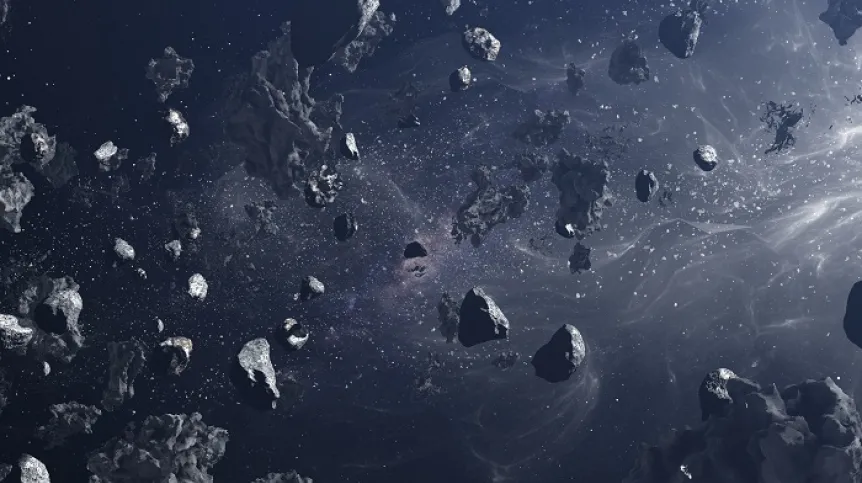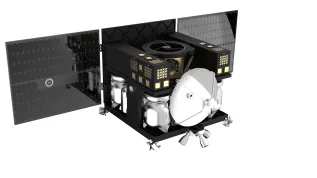
Working on a lunar meteorite is a real scientific treat, says Professor Monika A. Kusiak, a geochemist and mineralogist from the Department of Polar and Marine Research of the Institute of Geophysics of the Polish Academy of Sciences. She is studying a meteorite found in Antarctica with a team of scientists from NASA and Korea.
She said: “Working on a lunar meteorite is a real scientific treat. In total, there are about 80,000 meteorites on Earth, of which less than 1 percent are lunar meteorites; there are about five hundred of them. Those that fell on Antarctica are even fewer - maybe forty. One of them is in the possession of has the Korea Polar Research Institute (KOPRI).”
She added that Poland does not have such meteorites, nor does it conduct expeditions to Antarctica with the purpose of searching for meteorites.
The researcher specialises in accessory minerals, those that usually make up less than 1 percent of the rocks. In the lunar shard, she studies the mineral zirconium. Zirconium silicate contains enough uranium, thorium and lead to calculate the age of the entire mineral based on radiological decay. This allows her to draw conclusions about the geological evolution of the rock, and, more broadly, the area.
Kusiak said: “Earth is our home, so we need to know it to understand where we live and where we are going. The moon formed when Earth was still very young, hot, and unconsolidated. That's when a planet the size of Mars hit it, partially melted with Earth, and knocked out a fragment that formed the Moon, which became a natural satellite. The history of Earth and Moon is consistent, so by studying the Moon, we can also learn about the beginnings of our planet.”
The lunar meteorite DEW12007 was found on the so-called on blue ice about 40 km from Mount DeWitt (Victoria Land, East Antarctica) during the Korean-Italian Antarctic Expedition.
One of its participants was Dr. Changkun Park from the Korea Polar Research Institute (KOPRI). Isotopic analyses have shown that it is one of the oldest lunar samples, with an age determined by the decay of uranium and lead at 4.34 billion years.
Kusiak said: “Minerals for scientific research come either directly from the Apollo lunar missions (collected by astronauts, and even geologists), or - from Earth. Among the terrestrial finds are lunar and Martian meteorites. They are mostly found in the Sahara (North Africa), Oman and Antarctica. Researchers from the United States, Japan and Korea organize expeditions dedicated to the search for meteorites."
The Polish researcher studies the nanostructure of zirconium grains, the sizes of which do not exceed 50 micrometers. Analyses have shown that these structures can only form under conditions of high shear stress during shockwave shock discharge. Thanks to samples from the Apollo 15 and Apollo 16 missions, the age of the impact with Earth was determined to be 4 billion 200 million years ago. The research results have been published in the journal Contributions to Mineralogy and Petrology.
The scientific meeting of the DEW12007 study team was held at NASA's Johnson Space Center in Houston. The Polish researcher was invited to the research project thanks to her experience in working with minerals from the Apollo 15 and 16 missions. At that time, she was a Humboldt Foundation scholarship and worked in Potsdam.
Among the most interesting scientific experiences, the researcher also mentions expeditions to Antarctica, Greenland and Labrador. She was at the Dobrowolski Polish Antarctic Station named - after 42 years of the station being decommissioned, the team was tasked with reopening it, restoring its function and adapting it to scientific work for the next generations.
Kusiak continued: “It was such an amazing event that I thought it was the limit of the possibility of conducting fascinating research. But right now I can work with extraterrestrial matter, which excites everyone and probably always will. Not only do I conduct experiments with samples collected in Antarctica, I worked in Houston at NASA, and soon I will be studying a meteorite that fell in Poland. This is research with Dr. Agata Krzesińska, a Polish researcher working at the University of Oslo.”
Having held the meteorite in her hands, she added that it is not a lunar meteorite, it does not contain silicates (or zirconium), but phosphates. The researcher hopes that this works will also tell something interesting about the Universe.
PAP - Science in Poland, Karolina Duszczyk
kol/ zan/ kap/
tr. RL













